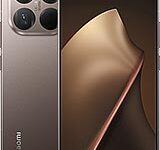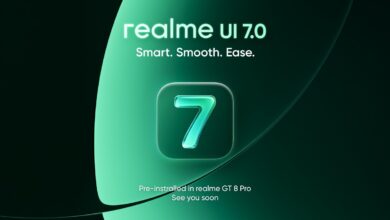iPhone 17 Pro Max vs. iPhone 16 Pro Max: Which Reigns Supreme?

Apple iPhone 17 Pro Max vs. iPhone 16 Pro Max: A Comparative Analysis
This analysis provides a detailed comparison of the Apple iPhone 17 Pro Max and its predecessor, the iPhone 16 Pro Max, focusing on key advancements and differentiating factors for discerning consumers and tech enthusiasts.
Table of Contents:
The following sections will cover a comprehensive assessment, encompassing size, display, battery life, charging speed, speaker performance, processing capabilities, benchmark results, and camera system comparisons.
Size and Design
The iPhone 17 Pro Max introduces a notable shift in material construction, transitioning from titanium to aluminum. Despite this change, the overall dimensions and weight remain largely consistent with the previous generation. While the 17 Pro Max is slightly heavier, the difference is negligible. The revised design features smoother back edges, potentially enhancing ergonomics. However, the camera plateau’s anodization may be susceptible to chipping over time, potentially leading to increased signs of wear compared to the glass-titanium build of the 16 Pro Max. Both models maintain an IP68 rating for dust and water resistance, with Apple specifying submersion at up to 6 meters for 30 minutes. The color palettes differ between the two generations. The 17 Pro Max offers options such as Cosmic Orange, a blue variant, and Silver, while the 16 Pro Max features more subdued hues, including a black-ish option.
Display
The display specifications remain largely unchanged between the two generations. Both models feature a 6.9-inch panel with an adaptive 120Hz refresh rate and Dolby Vision support. A key difference lies in the display’s protective covering, with the 17 Pro Max utilizing Ceramic Shield 2, which exhibits enhanced scratch resistance and an anti-reflective treatment. Apple has refined brightness levels, now promising 1600 nits in HDR compared to the 2000 nits of the 16 Pro Max, but potentially up to 3000 nits in specific scenarios. Internal testing reveals that the iPhone 17 Pro Max achieved 800 nits with manual slider adjustments, whereas the 16 Pro Max reached 900 nits. The previous model reached ~1800 nits under test conditions, while the 17 Pro Max hit 1000 nits. Both displays, however, demonstrate excellent performance, exceeding 2000 nits for smaller illuminated patches.
Battery Life
The iPhone 17 Pro Max incorporates a minor battery capacity increase to 4,832mAh, compared to the 4,685mAh powerpack in the 16 Pro Max. The increase is more substantial in eSIM-only regions, reaching 5,088mAh. Our testing on the 17 Pro Max with a physical SIM slot revealed modest to moderate improvements in video playback and gaming battery life, with a minor decrease in web browsing and call time. While both models offer superior battery performance compared to Android devices, the differences between them are not substantial.
Charging Speed
The 17 Pro Max introduces significant advancements in charging speed. The adoption of the AVS extension of the Power Delivery protocol and the release of a 40W Dynamic Power Adapter with a 60W Max are key. Even when using third-party Power Delivery chargers, the 17 Pro Max exhibited a substantial improvement in top-up speeds compared to its predecessor. Testing yielded a charge of up to 47% in 20 minutes. Fast wireless charging is also supported, up to 25W via MagSafe and third-party Qi2-compliant chargers.
Speaker Test
Both Pro Max models utilize a stereo speaker system comprising a bottom-firing unit and the earpiece. The 17 Pro Max’s drivers are slightly smaller, which could contribute to the lower loudness observed in testing. Apple’s adjustments to mid-range frequencies may have resulted in a more balanced and refined sound profile for the 17 Pro Max. Both models provide commendable audio quality.
Performance
The iPhone 17 Pro Max is powered by the Apple A19 Pro chipset, succeeding the A18 Pro in the 16 Pro Max. The new chipset features a 6-core CPU with a 2+4 core configuration, with higher clock speeds on the updated cores. An improved GPU and NPU, with the same core counts, are also included. The new generation incorporates 12GB of RAM, compared to the 8GB found in the 16 Pro Max. The 17 Pro Max offers up to 2TB of storage, while the older model is capped at 1TB. The 17 Pro Max also introduces a vapor chamber cooling solution, designed to enhance heat dissipation.
Benchmark Performance
The iPhone 17 Pro Max demonstrates significant performance improvements over the iPhone 16 Pro Max. These improvements are most noticeable in GPU-intensive tasks, alongside CPU performance gains. Sustained load testing on the CPU showed meaningful improvement, although long-term GPU stability was less impressive. Overall, the new model provides a performance advantage.
Camera Comparison
The iPhone 17 Pro Max introduces improvements to the camera system, including a new telephoto camera and a redesigned selfie camera. The telephoto lens now offers 4x optical zoom with a 48MP sensor, replacing the 5x 12MP configuration of the previous model. The front-facing camera captures 18MP shots at 20mm in portrait or landscape orientation, unlike the 16 Pro Max’s 12MP 23mm selfies. The main and ultrawide cameras remain unchanged. iOS 26 on the 17 Pro Max includes a revised camera application, also available on the 16 Pro Max.
Image Quality
Daylight testing of the main camera (1x) reveals improved color expression and contrast in the 17 Pro Max’s images, resulting in superior photo quality. The telephoto lens (4x, 8x), ultrawide camera (0.5x), and selfie camera also demonstrated excellent performance.
Video quality testing showed the 17 Pro Max and 16 Pro Max to have wide-ranging video recording capabilities, including 4K capture at 60, 30, or 24fps with all cameras. The primary rear camera can also record at 4K120. Dolby Vision recording is available in all modes on the new model, while the 16 Pro Max can’t do it at 4K120. ProRes is available on both models, while the 17 Pro Max also features ProRes RAW and Apple Log 2. During daylight video capture, the phones’ performance was comparable, with the 17 Pro Max exhibiting a slight advantage at 8x. Subtle color reproduction differences were observed, with the 17 Pro Max leaning toward a warmer color profile. Low-light video recording was also tested, with the iPhone 17 Pro Max showing better video quality.
Verdict
The iPhone 17 Pro Max offers notable advancements over the 16 Pro Max in various areas, including design, charging speed, and camera capabilities. The new design may be subjectively viewed by some, but the 17 Pro Max offers more versatility with the selfie camera and enhanced low-light video recording. The improvements in charging speed also provide significant utility. In consideration of the upgrades, the iPhone 17 Pro Max justifies its price premium over the mildly discounted iPhone 16 Pro Max.
Key Advantages of the Apple iPhone 17 Pro Max:
- Aluminum build, potentially improved ergonomics, and distinct color options.
- Faster charging speeds.
- Enhanced performance.
- More versatile selfie camera.
- Improved low-light video performance.
Key Advantages of the Apple iPhone 16 Pro Max:
- Titanium build, possibly perceived as more stylish, and subtle color options.
- Potential cost savings.





